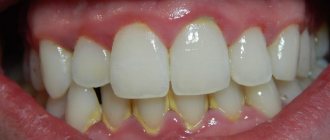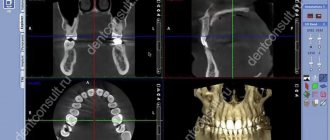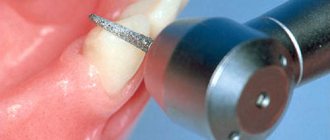From this article you will learn:
- Is it possible to rinse your mouth after removal,
- how to do it right,
- the better to rinse after tooth extraction.
The article was written by a dental surgeon with more than 19 years of experience.
Mouth rinsing after tooth extraction is the most common prescription prescribed by a dental surgeon after oral surgery. In most cases, solutions of antiseptics (medicines with antimicrobial activity) are used for mouth rinsing, or in some cases, saline solutions will be optimal. Most often, rinses are prescribed only after a complex tooth extraction, or if the extraction was carried out against the background of purulent inflammation.
Regular rinsing of the mouth with antiseptics can reduce the risk of developing alveolitis by approximately 80%, i.e. inflammation of the socket of an extracted tooth. However, if the patient rinses the mouth incorrectly, this, on the contrary, can lead to the blood clot falling out of the socket, the development of inflammation of the socket and the need for long-term treatment.
In addition to antiseptic solutions and soda-saline solutions, combined rinses can also be used, which, in addition to the antiseptic, additionally contain one or more anti-inflammatory components. Usually the latter are high concentrations of medicinal plants, which are found in a number of rinses. Such components additionally have a wound-healing effect, accelerating gum epithelization.
How to rinse your mouth after tooth extraction -
The most important rule is that you should never make intense rinsing movements. The fact is that immediately after tooth extraction, the socket is filled with blood, which normally coagulates almost immediately, forming a blood clot (Fig. 1-2). The blood clot also performs a protective function, preventing bacteria and food debris from entering deep into the wound. During the first few days, the clot is quite weakly attached to the bone walls of the socket, and therefore, if you rinse your mouth vigorously, the clot may fall out.
The loss of a blood clot from the socket will lead to bacteria and food debris getting deep into the socket. As a result, inflammation of the socket of the extracted tooth will occur, which dentists call “alveolitis.” Therefore, the right thing to do is either weak rinses (without active movements), or generally only antiseptic baths. The latter is that you must draw an antiseptic solution into the oral cavity, hold it for 30-60 seconds (without rinsing) and then spit it out.
What does the socket of an extracted tooth look like?
Thus, on the one hand, antiseptic rinses of the mouth after tooth extraction help prevent inflammatory complications (for example, suppuration of a blood clot and the development of alveolitis of the socket). Suppuration of a blood clot is possible in the following cases - 1) if the tooth was removed due to inflammation, 2) after a complex tooth extraction, 3) if there is a lot of soft microbial plaque, hard dental plaque or untreated carious teeth in the oral cavity.
In all these cases, antiseptic rinses (sometimes prescribed in combination with antibiotics) help prevent suppuration of the blood clot and the development of alveolitis in the socket of the extracted tooth. But on the other hand, if rinsing is carried out incorrectly, then, on the contrary, this can lead to the development of inflammation of the socket of the extracted tooth. Below you can see one of the options of what inflammation of the socket of an extracted tooth may look like (24stoma.ru).
Alveolitis of the socket of an extracted tooth –
If you look at Fig. 3-4, you will notice that in the depths of the socket traces of necrotic disintegration of a blood clot and food debris are visible, and the bone walls of the socket are exposed. Accumulations of microbial plaque are visible on the teeth. Typically, such inflammation of the socket is accompanied by an unpleasant odor from the mouth, and swelling of the gums may appear. The pain can be from moderate to very severe, and it tends to increase when hot or cold water enters the hole. Let's now figure out what to rinse your mouth after tooth extraction.
Using medications to help gums heal faster
Pharmaceutical preparations for rinsing the mouth are very popular.
- Stomatophyte - it is made using herbal extracts that relieve inflammation. The medicine must be diluted with water to the concentration specified by the manufacturer. The kit includes a measuring cup. The solution does not irritate the mucous membrane, therefore it is suitable for use after tooth extraction;
- Chlorophyllipt – made from eucalyptus extract. For dental purposes, it is often used in the form of an alcohol infusion, so after tooth extraction it should be used carefully to avoid burns;
- Salvin is an alcohol-containing preparation that contains essential oil and tannins. To use for rinsing, the product must be made low-concentrated, diluted with water in a ratio of 1:10. In such a low concentration, the alcohol tincture does not dry out the tissues of the oral cavity. At the first sign of irritation, discontinue use immediately.
How to rinse your mouth if you have a tooth pulled out -
As you already understood, antiseptic mouth rinses are not mandatory. If the tooth was removed in the absence of purulent inflammation, if you have good oral hygiene and there are no untreated carious teeth, you can do without them altogether, simply rinsing your mouth with clean water after eating. Or, if you wish, you can rinse your mouth with regular herbal mouth rinses or fluoride solutions, because. they also have a weak antiseptic effect.
But if the tooth was removed due to inflammation, or you had a complex tooth extraction involving an incision in the gums and sutures, stronger rinses are needed. We will discuss in detail what to rinse after tooth extraction in these cases in the description of the following medications.
1) Chlorhexidine solution 0.05% (instructions) –
Chlorhexidine digluconate has a fairly good antiseptic effect, is sold without a prescription, and its cost for a 0.05% solution is only about 30 rubles. Has a slightly bitter aftertaste. After tooth extraction, rinsing with chlorhexidine should be done 3 times a day (each time the solution should be kept in the mouth for about 1 minute). And remember that you can’t do active rinsing movements - you can only weakly rinse and bath!
There is also another popular antiseptic, Miramistin, which costs many times more and is slightly inferior in antiseptic effect to chlorhexidine. The only advantage of Miramistin is its antiviral activity, which is important for stomatitis, but not after tooth extraction. In addition, after rinsing the mouth with chlorhexidine, a thin indelible film of chlorhexidine bigluconate is formed on the surface of the oral mucosa, which will exert its antiseptic effect for up to 5-7 hours.
2) Soda-salt baths –
It is preferable to do rinses and baths with soda or salt only if, in addition to tooth extraction, you have had a gumboil (purulent gum abscess) opened. After making the incision, the doctor additionally inserts a glove rubber drain into it so that the edges of the incision do not stick together and purulent exudate flows out of the wound. Soda-salt baths will allow you to better draw out purulent exudate from the wound. They can be done 4-5 times a day.
But keep in mind that if you have drainage, you still shouldn’t do active rinsing movements, because... in addition to the loss of a blood clot from the socket of an extracted tooth, this can also lead to the loss of drainage from the wound. In addition to salt baths, in this case it is also recommended to periodically rinse your mouth with chlorhexidine solution 2-3 times a day.
3) Rinse aid “Parodontax Extra 0.2%” –
This rinse contains a higher concentration of the antiseptic Chlorhexidine - 0.2%, which will mean a significantly more pronounced antiseptic effect than regular chlorhexidine with a 0.05% concentration. This drug makes sense to use if you had a traumatic, complex removal with sutures or additionally opened a purulent abscess on the gum.
Rinses (baths) with this drug are carried out only 2 times a day, and it can be used for no more than 10 days. Although after a simple simple removal, antiseptic rinses are usually necessary for only 3-4 days, and after a complex removal - for 7-8 days. The cost of the drug is from 230 rubles per 300 ml bottle.
4) Rinse aid “PRESIDENT Antibacterial” –
This rinse also contains 0.2% chlorhexidine, but in addition it has high concentrations of anti-inflammatory components (mallow, chamomile and echinacea extracts). Accordingly, this drug will be good after a difficult removal with sutures or after opening a gum abscess. It will quickly relieve inflammation and speed up wound healing. A 250 ml bottle costs from 200 rubles.
5) “Stomatofit” (in the form of a solution) –
This is a concentrated solution of medicinal plants, which is diluted with water before use. It contains a high concentration of extracts of chamomile, sage leaves, oak bark, calamus root, common thyme, peppermint, and arnica. It has a good anti-inflammatory and weak antiseptic effect. Will speed up healing.
Indications for hygiene procedures with soda
Baking soda will help get rid of a number of oral problems.
The use of a special liquid for treating teeth is indicated in the following cases:
- for pain in teeth of various origins;
- to remove pathogenic microorganisms that enter the oral cavity along with food and are retained between the teeth;
- to eliminate plaque that lingers on tooth enamel and is caused by prolonged smoking, drinking coffee and strong tea;
- to prevent infections after tooth extraction;
- to prevent the development of inflammatory processes and darkening of tooth enamel, as well as the formation of tartar.
Indications for the use of soda solution are:
- oral candidiasis;
- flux;
- caries;
- stomatitis;
- inflammatory processes of the gums and tongue (gingivitis and glossitis);
- periodontitis.
Note! Despite the harmlessness of water with added liquid, it cannot be used as the main method of therapy: diseases of the teeth and oral cavity must be treated with the assistance of qualified specialists.
What needs to be done in parallel with rinsing -
But after tooth extraction, it is important to perform not only antiseptic rinses (baths) in the oral cavity, but also to follow other recommendations, which will fully allow you to avoid the development of inflammation in the socket of the extracted tooth. Also, in addition to following general recommendations, in some cases it may be necessary to take medications - analgesics, antihistamines, and antibiotics.
- Analgesics (NSAIDs group) – the optimal choice of painkillers in dentistry are drugs from the NSAIDs group (non-steroidal anti-inflammatory drugs). Drugs in this group not only relieve pain well, but also at the same time reduce inflammation in tissues. If the removal was difficult, it is best to start taking one of these drugs before the local anesthesia wears off. Drugs from the NSAID group include: ibuprofen, nurofen, ketorol, ketanov, ketoprofen and others (which one is better - read the link above).
- Antihistamines - this group of drugs has not only antiallergic, but also anti-edematous/anti-inflammatory effects, and also enhances the effect of analgesics. If the removal was very traumatic, then we recommend taking a drug such as Suprastin for the first 3 days (1 tablet 1 time per day before bedtime).
- Antibiotic therapy - antibiotics are prescribed by a doctor in two cases. Firstly, when a tooth was removed due to purulent inflammation (with or without a gum incision). This is very important because... infection can lead to suppuration of the blood clot, its necrotic disintegration and the development of alveolitis. Typically, dental surgeons prescribe the antibiotic Lincomycin (2 capsules 3 times a day, for 5-7 days). But for gastrointestinal diseases, it is better to use Flemoxin Solutab or Unidox Solutab.
Sodium bicarbonate rinse
Baking soda is a substance often used to disinfect wounds. Dentists recommend performing manipulations only when removing a purulent tooth. Inflammatory processes occurring in the oral cavity are another reason to resort to an effective composition.
Soda recipe:
- Boil water (220 ml), cool to room temperature, hot liquid will reduce the effectiveness of NaHCO3.
- Combine warm liquid, sodium bicarbonate (15 g).
- Stir until all grains of powder disappear.
- Use immediately, reheat if necessary.
Rinse carefully - if you experience pain, simply hold the prepared liquid near the wound. Cotton wool soaked in soda will help stop the inflammatory processes - place a small swab on the site of the extracted tooth and leave for a quarter of an hour.
You should not exceed the recommended procedure time - NaHCO3 will begin to corrode the tissue, causing additional complications.
Type of gum after removal (normal) –
How can you determine that your gums are healing normally after tooth extraction? First, open your mouth wide in front of the mirror and see if the hole of the extracted tooth is covered with a blood clot. In the photo below you can see what the holes should look like immediately after removal and after different times.
Under no circumstances should the hole be empty. The latter may indicate that the blood clot has either already fallen out or has not formed at all (this is possible if the doctor used anesthetic solutions with a high vasoconstrictor content during anesthesia). In this case, you need to immediately consult a doctor again. Please note that normally the socket of each tooth will be covered with a dense blood clot (Fig. 5-6).
At first, the surface of the blood clot will be bright red, but within a few days it will become covered with a whitish or yellowish coating (this is fibrin). This is completely normal and does not indicate the development of inflammation. Next, gradual epithelization of the surface of the blood clot will occur (Fig. 7), until the usual gum mucosa appears on its surface. But if the hole is empty, there are food remains in it, there is pain and an unpleasant odor - these are signals of the development of inflammation. We hope that our article was useful to you!
Sources:
1. Higher prof. the author’s education in surgical dentistry, 2. Based on personal experience as a dental surgeon, 3. National Library of Medicine (USA), 4. “Outpatient surgical dentistry” (Bezrukov V.), 5. “Propaedeutics of surgical dentistry” (Soloviev M. .).
Is it possible to rinse and when to do it?
A day after tooth extraction, rinsing is acceptable in some situations, but these are more likely to be oral baths than active washing procedures.
Few people have an oral cavity in perfect condition. Caries, loose teeth, plaque and stones, and often rotten tooth roots are not the best neighbors for the bleeding surface of the alveoli. Mouth baths will reduce the risk of infection penetrating deep into the socket.
When carrying out a hygienic procedure aimed at combating inflammation, you should remember:
- active rinsing movements will do more harm than good;
- For the first 24 hours, limit yourself to gentle brushing of your teeth;
- if pain occurs during the procedure, rinsing should be stopped;
- If bleeding resumes, visit a doctor immediately.
In addition, do not forget the dentist’s recommendations: do not eat hot food, do not lift heavy objects, and do not touch the socket with your hands and tongue.
Preparation method
The soda solution should be prepared correctly.
Please note that for each mouth rinse procedure, you need to prepare the product anew. The product should be prepared only with warm water: hot liquid can harm the mucous membranes.
To prepare it, you need:
- boil water, cool it to a temperature of 36 degrees;
- pour a teaspoon of soda into a glass of water (200 ml);
- Stir the liquid thoroughly so that there is no sediment left at the bottom.
The finished product must be used immediately after preparation. If the toothache is very severe, you can increase the amount of soda in proportion to two teaspoons. But in this case, you should act with extreme caution: soda can corrode soft tissue.
Properties and benefits of soda for teeth - the principle of action of mouth rinse
Baking soda will help relieve toothache.
Baking soda does not have a negative effect on tooth enamel. A rinsing composition based on it has the following beneficial properties:
- has an antiseptic effect, eliminating pathogenic microorganisms;
- whitens the surface of teeth;
- relieves pain;
- makes breath fresh;
- reduces the severity of the inflammatory process.
Important! A composition with a weak concentration of soda can be used even during the period of teething in infants. To relieve pain, this product is lubricated on the gums and tongue.
Water with soda dissolved in it has a pronounced antiseptic effect and also suppresses pain. This product is non-toxic and safe for teeth and mucous membranes of the oral cavity.
Benefits and harms
The benefits of treating the mouth and teeth with soda solution were mentioned above. However, this remedy also has negative sides. These include:
- the possibility of vomiting as a reaction of receptors to an irritant;
- overdrying of the mucous membranes of the esophagus and stomach (with frequent use of the solution);
- the possibility of developing an allergic reaction;
- fluid retention in the body, which is associated with the high salt content in soda.
Before using a soda solution, you need to make sure that there are no allergic reactions to its main component.











